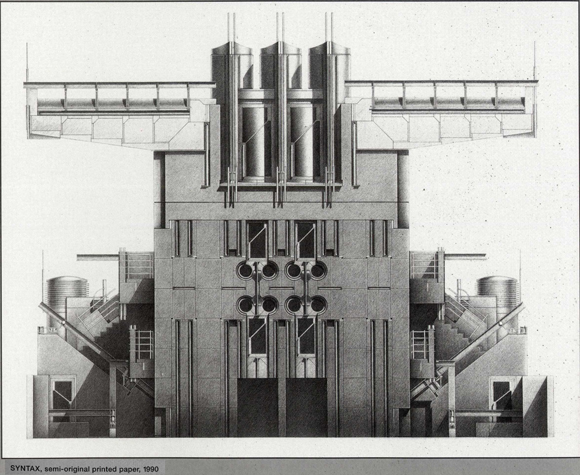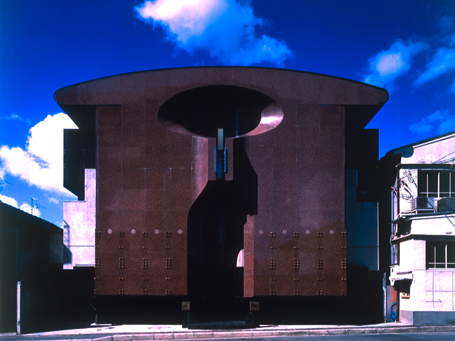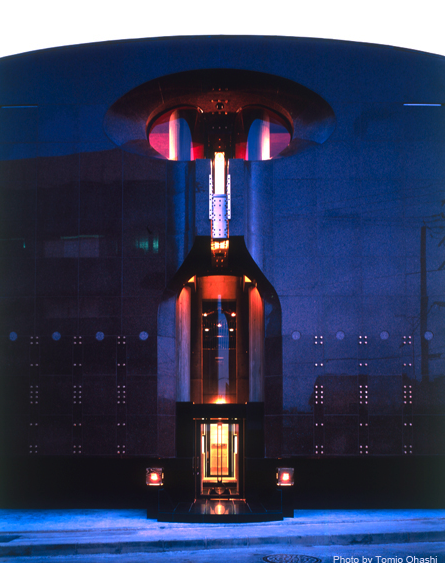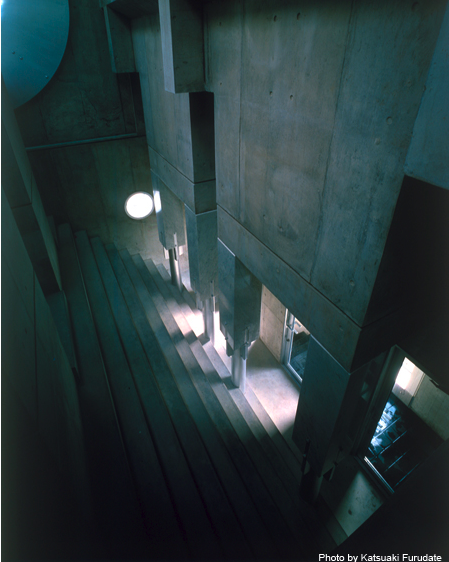Shin Takamatsu: Essay and Lecture Synopsis
 Monday, June 7, 2010 at 9:37PM
Monday, June 7, 2010 at 9:37PM I can't find any audio or video relating to Takamatsu. However I did find a couple of interesting essays, one from www.jya.com and one from www.posterous.com which I will include as downloadable files at the bottom of the post...and a synopsis of a lecture given by Takamatsu in 2002 which I grabbed from http://www.classic.archined.nl/ which is below the following images.


Syntax, the building above was demolished in 2007. I learned this recently and am baffled by what they replaced it with...check it...http://www.butterpaper.com/cms/news/537/bad-syntax


Origin 1 (1981) (Image Courtesy Takamatsu's Website)


The Ark (1983) (Courtesy Takamatsu's Website)
Synopsis of 2002 lecture from Archined
By: Janneke van Bergen
Translation: Billy Nolan
Shin Takamatsu gave a lecture at the Berlage Institute. Japanese architecture is back in fashion again. Last autumn the Berlage staged an exhibition on trends in European and Japanese architecture, and the University of Technology in Delft is currently running a lecture series devoted to Japanese design practice. Just how different Japanese practice is became clear in the lecture 'Hard-boiled architecture'. Janneke van Bergen reports.
The presentation itself amounted to a statement: no words but deeds. So Shin began with a twenty-minute-long slide show, to the hard beats of Leftfield, Daft Punk and Underworld. Images of old and new work, countless forms and buildings, flitted by. The projects, futuristic and uncompromising, were imprinted as emblems on the mind. This torrent caused a nervous giggle to ripple through the audience. Besides architecture, Shin also showed lots of atmospheric images and cinematic interior perspectives, and it was as if you could actually. step into the virtual spaces.
Then there was Shin himself. Speaking in short Japanese sentences, he told of his father, a fisherman, who distrusted people who talked too much, for they scared the fish away. Or as Shin added: 'Architecture says more than words. I think I should vanish from the site now…' A very humble attitude for a man who usually makes large, monumental architecture.
During the lecture the audience was taken swiftly through a number of recent projects, with few words from an interpreter. Remarkably, the weighty and brusque quality of his earlier work, which many particularly appreciate, is lacking in these projects. With their white flowing forms, transparent and slender structures, they are almost transcendental. The similarity to his earlier work is in terms of scale, geometry and emblematic composition. All projects are detailed to perfection. The recently completed temples in Higashi and Myokinzan are memorable. Here, monumental architecture is subservient to religion, and tradition and intervention merge seamlessly with each other.
In the other projects architecture again assumes the main role, and little is said of the siting. Shin's terse, ironic commentary focuses on the political situation, on whether the major was or wasn't re-elected after completion. Transcendentalism started to merge with power-craving architecture. Two of Shin's current projects are in Moscow, where after the recession in Asia the money can be made. Three-dimensional facades, glass floors, crystal interiors: giggles in the audience again.
The apotheosis consisted of two animated films in which mystic music accompanied us on a journey through a number of Utopian buildings, complete with sunset and dazzling fireworks. Shin managed to put them into perspective by telling us that they were made for planning application purposes, but the giggling still gave way to loud laughter. The cultural difference was clear. Architecture like this is only possible in a country where conformity is the order of the day, for our polder-model society fractures easily into countless fragments. Shin translates these Utopias into reality, with great care and precision, and great rarity (the only way to turn such visions into stunning architecture).
The question from the audience, whether it is possible to design a building with other people, is answered in the negative. In every project, Shin embarks on an introspective search for images, which he captures in drawings. His buildings embody the ideas and signature of just one person, and that is himself. With that, the romance of the 'fisherman's son becoming famous architect' was broken forever. It also explains the title of the lecture: hard-boiled architecture. Shin used to read lots of hard-boiled detective stories. And that's how he sees himself, obedient to his own rules and laws. And practical tips? Be good in politics, ventured Wiel Arets. 'To understand fish is to understand men', my neighbour jested. And nobody knows that better than Shin.
 Shin Takamatsu in
Shin Takamatsu in  Download,
Download,  Lecture,
Lecture,  Transcript
Transcript